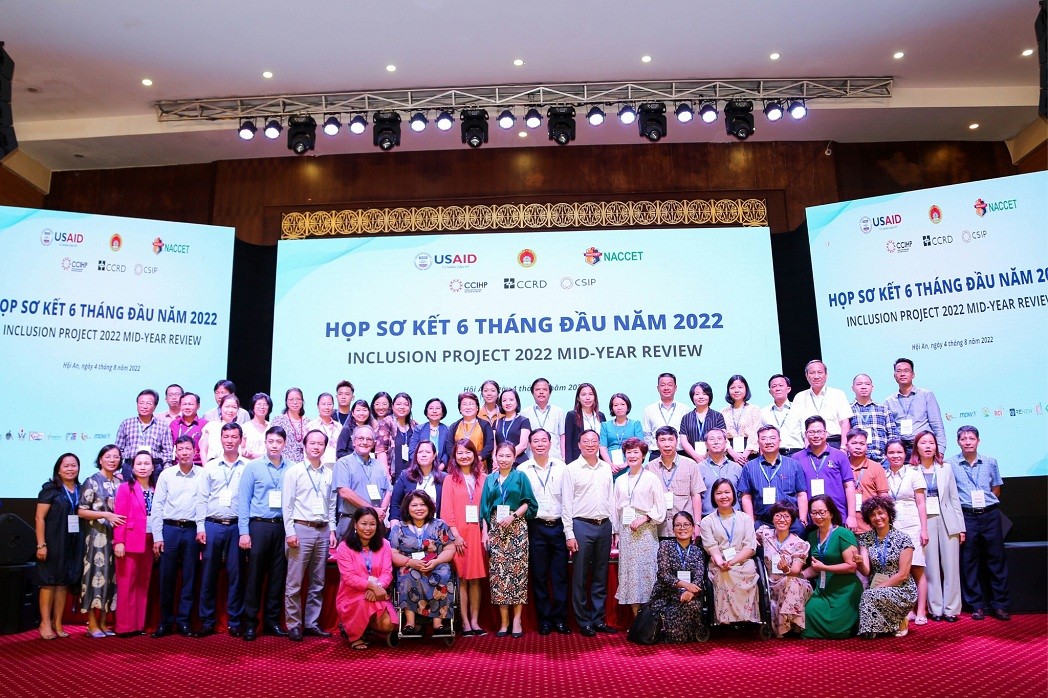 |
| At the Inclusion project mid-year review 2022 in Hoi An City, Quang Nam province. Source: USAID Vietnam |
The United States Mission to Vietnam, through the US Agency for International Development (USAID), and its Government of Vietnam partners, including the National Action Center for Chemical and Environmental Treatment (NACCET), recently launched the second phase of USAID’s flagship disabilities project, INCLUSION, in Binh Dinh and Kon Tum provinces. This project seeks to promote the inclusion of individuals with disabilities in their respective societies.
This phase of the project is expected to come to an end in 2026 and will offer specialized assistance to people with severe disabilities, as reported in a recent press release issued by the United States Embassy in Vietnam.
Begun in 2021, USAID’s USD 65 million INCLUSION project partners with the Vietnamese government, local organizations, and the private sector to strengthen the country’s rehabilitation system and community support networks to enable all persons with disabilities to fully participate in society while enhancing their overall quality of life.
The project provides direct assistance to people with severe disabilities, strengthens and broadens rehabilitation and social services, and promotes policy implementation. To ensure continued success, the project also develops the capacity of national and local governmental disabilities agencies and disability organizations in the community.
In addition to Binh Dinh and Kon Tum, the project is active in six other provinces in Vietnam where Agent Orange was heavily used during the American War: Quang Tri, Thua Thien Hue, Quang Nam, Dong Nai, Binh Phuoc, and Tay Ninh.
Over the course of its five-year duration, the project is expected to provide a total of 60,000 individuals with disabilities with rehabilitation, care, psychological support, assistive devices, and/or livelihood assistance.
For over three decades, the United States and Vietnam have joined forces to improve the lives of approximately one million people living with disabilities. To date, USAID has committed more than $140 million to these efforts. By providing access to quality education, healthcare, and economic opportunities, these funds have enabled individuals with disabilities to progress and thrive.
Vietnam is the largest and longest-running disability program of USAID in the world, with its roots tracing back to the establishment of the Leahy War Victims Fund in 1989.
|
During the ten-year period between 1961 and 1971, the United States Army utilized approximately 80 million liters of herbicide, with Agent Orange accounting for 61 percent of this total. This herbicide contained approximately 366 kilograms of dioxin, a particularly dangerous toxin that is among the most hazardous substances known to humanity. According to documents recently released by the US Department of Defense, more than 434,000 gallons of AO (Agent Orange) containing approximately 11 kilograms of dioxin were sprayed in the A Luoi district of Thua Thien-Hue province in Central Vietnam between 1965 and 1970. |
